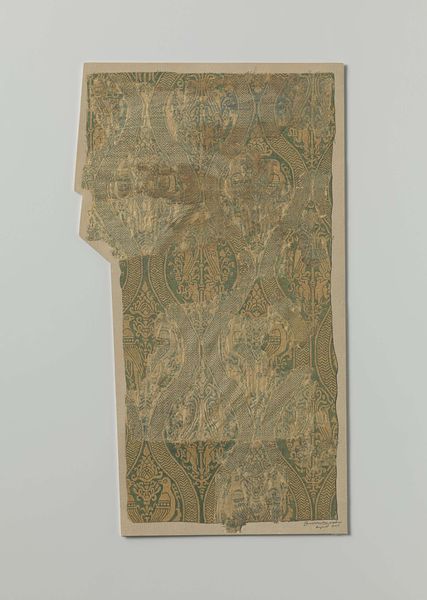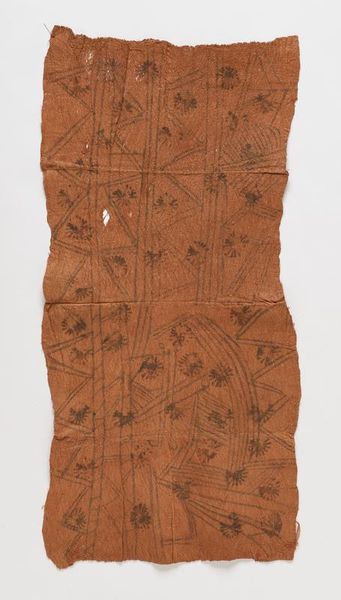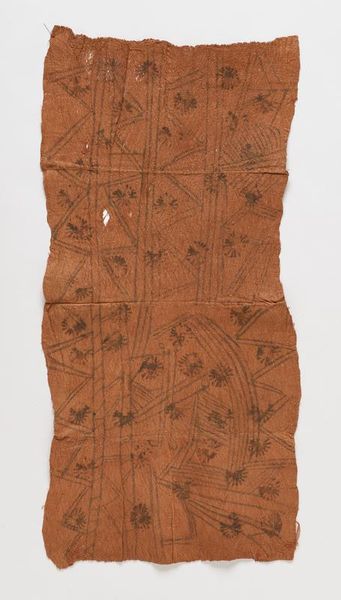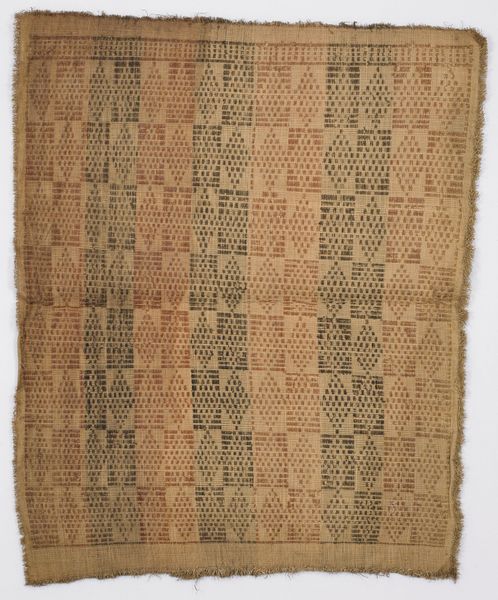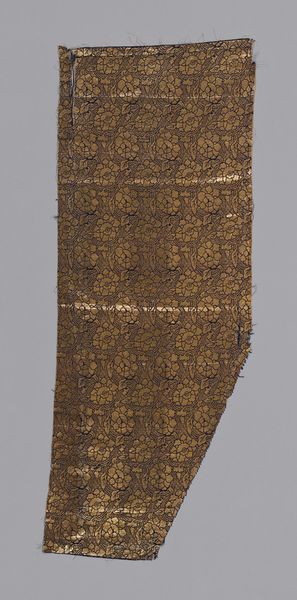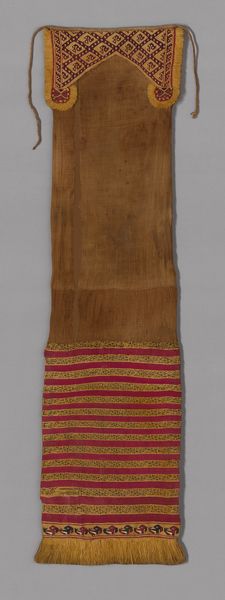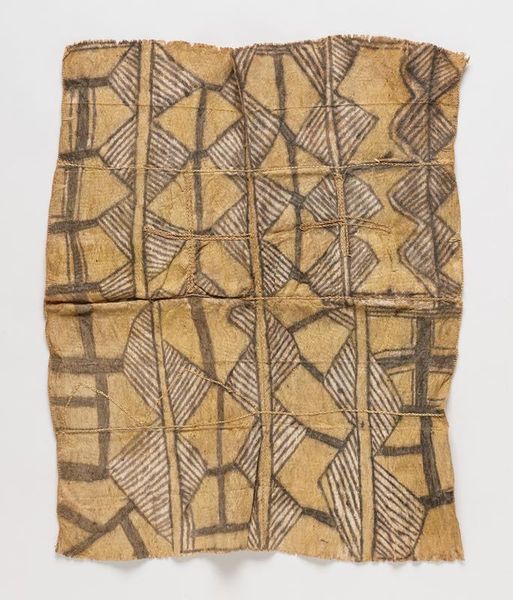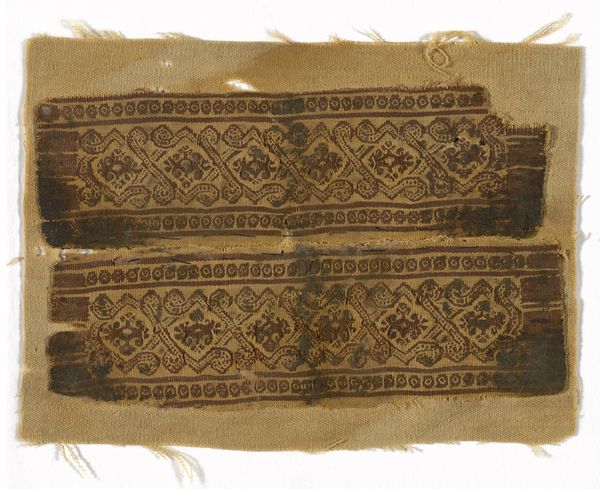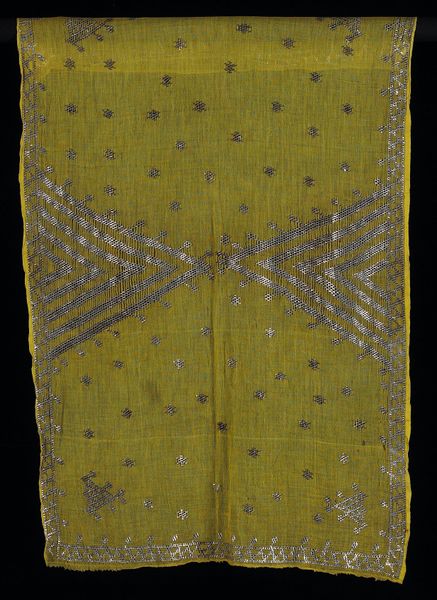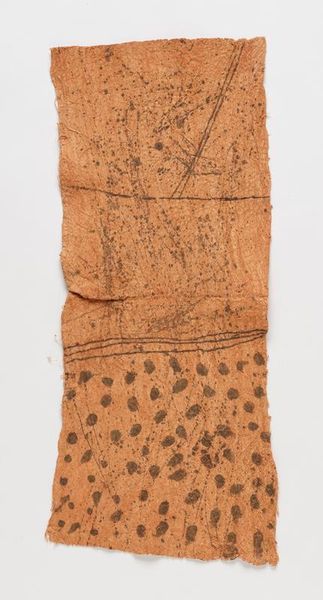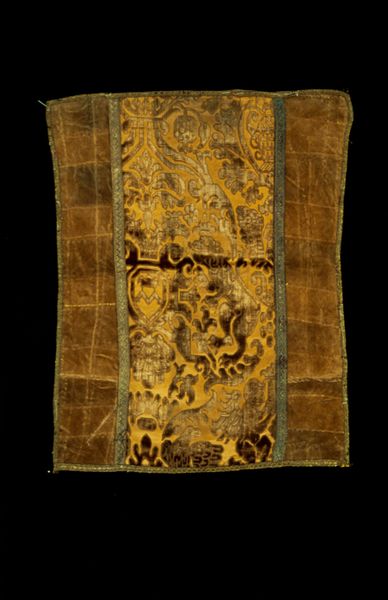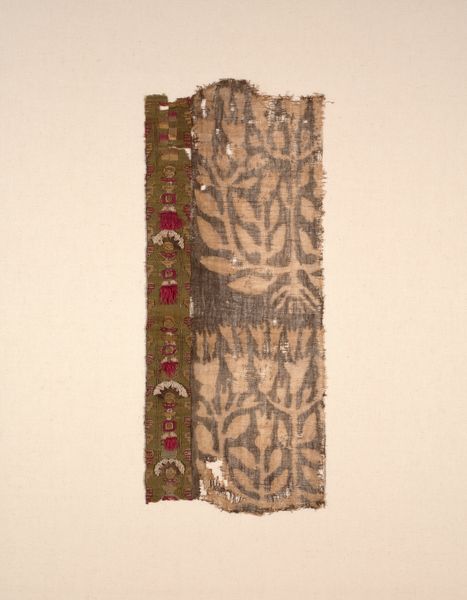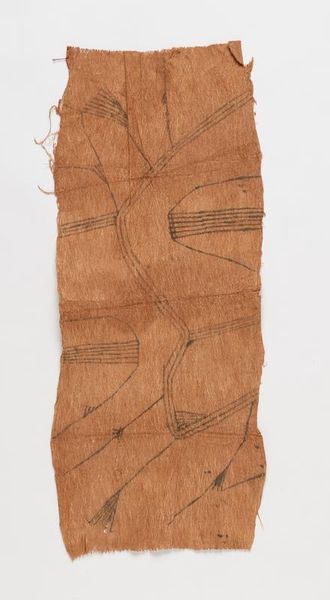
Tunic (Front Panel) Arab period (641–969)/Fatimid period (969–1171), 9th/10th century
0:00
0:00
weaving, textile
#
medieval
#
pattern
#
weaving
#
textile
#
text
#
egypt
#
men
#
costume
#
islamic-art
#
dress
Dimensions: 116.5 × 39 cm (46 × 15 in.)
Copyright: Public Domain
Editor: Here we have "Tunic (Front Panel)," a weaving and textile piece dating from the 9th or 10th century, somewhere between the Arab and Fatimid periods in Egypt. Looking at this, I am drawn to how detailed the patterns still are, even after all this time. As a historian, what do you see in its cultural context? Curator: This fragment is more than just decorative, it gives us tangible insight into the lives and visual culture of the period. Its survival points to the reverence and value placed on textiles. The patterns themselves – the human figures, the geometric borders, are all visual signifiers deeply intertwined with the social and religious environment. Consider where it was found; what other textiles existed at that location? Editor: It makes me think about how a piece of clothing like this signifies status, not just personal taste. Were tunics like this common, or were they reserved for a specific class? Curator: That's precisely the right question. Textiles were very valuable, indicating a specific social class and serving as a mobile form of wealth and display. This isn't simply a 'dress'; it's a statement. We must ask ourselves what the presence of men might suggest for gender roles or civic identities represented here. Editor: So understanding this tunic helps us understand social structures in ancient Egypt? Curator: Exactly. And beyond just Egypt, it also gives insight into cultural and artistic exchange. Consider the influence of Islamic art in its design. Think about how its imagery challenges or reinforces certain power structures and institutional hierarchies of the time. Editor: I see what you mean; the art reflects power relations of its period. I never thought of a textile carrying so much significance. Thank you, that gave me much to consider about clothing as a historical object! Curator: My pleasure! Remembering that even everyday items reflect larger cultural narratives makes art history endlessly fascinating, right?
Comments
No comments
Be the first to comment and join the conversation on the ultimate creative platform.
